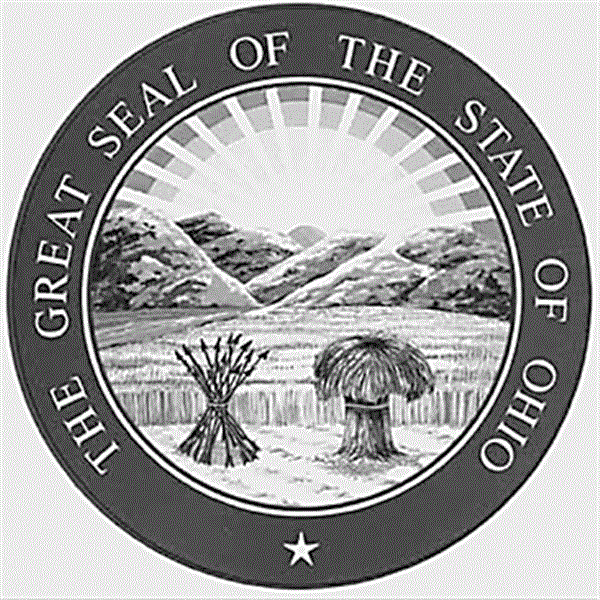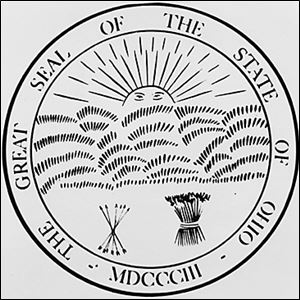
Seal has picturesque history
3/2/2003
Ohio's Great Seal continues to be a work in progress, regularly redone with and without the OK of the General Assembly.
In early years, the changes to the seal's rural landscape often were unsanctioned and usually had to do with adding or removing things like a canal boat, river, or snowcapped mountain.

The Great Seal went through many changes between 1803, above, and 1967, below.
The first emblem, of unknown authorship, was adopted in 1803 and was very crude, with eyes on the face of a rising sun, a former Ohio Historical Society official said.
Some seals carried 1802 as the date of Ohio statehood rather than 1803, reflecting the prevailing opinion in the state's infancy that it became a state with the signing of the state constitution on Nov. 29, 1802, rather than a few months later, in 1803, when the state legislature first met.
Rush R. Sloane, a Sandusky lawyer and a member of Ohio's State Centennial Commission, writing in 1903 on the seal's numerous transformations, found it an outrage that the state had no law covering the seal for more than 60 years beginning in 1805.
“What a singular oversight in legislation!” he wrote. “Is it not remarkable that in this long period of years some of the state officials, the codifiers of the statutes, or the members of the constitutional convention of 1851, among whom were many of the ablest lawmakers of the state, should not have discovered it?”

To him, the use of a great seal was a centuries-old tradition essential to assuring the authenticity of important documents.
In its earliest years, Ohio's Great Seal took form in sealing wax melted onto paper, said Tom Rieder, reference archivist for the Ohio Historical Society. Later, small hand presses embossed the seal on paper.
It can be used only by the governor's office and is surrounded with the words “The Great Seal of the State of Ohio.” Other state and local officials use seals without that wording.
The original Ohio Constitution provided for the creation of a state seal, but left its contents to be set by the General Assembly.
In 1868, a law required a sheaf of wheat in the foreground and a bundling of 17 arrows because Ohio was the 17th state in the Union.
Despite the law, various versions abounded, leading legislators in 1967 to standardize its design.